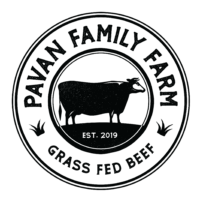Rotational Grazing
Rotational Grazing/Management Intensive Grazing/ Mob Grazing
Grass Fed Beef have the ability to create and maintain a dense and diverse ecosystem. In bygone days the buffalo was steward to the Prairie grasslands one of most diverse and stable ecosystems to have ever existed. We must look for wisdom in the relationship between the buffalo and its grass. The two most important tenants of this relationship are to rotate cattle to fresh pasture as often as possible while maintaining a high stocking density. During the spring while the grass grows quick my cattle move 4x a day, during summer and fall as the growth slows it is twice daily. Preventing the cattle from grazing the same plant for 30 or more days allows regrowth and the storing of energy in the roots. What is not consumed by mouth is trampled down by hoof or defecated upon. This can only be accomplished by crowding the herd similar to wild buffalo. If a high stocking density is not managed, then unpalatable species will be left standing and will eventuality procreate. A high stocking density and frequent moves is accomplished by dividing pasture into small grazing cells. Using electrical wire and step in posts. We can turn a 10 acer pasture into forty 1/4 acers cells or paddocks. Having 1/2” water lines run along the perimeter allows a water trough to follow along with the animals.
While rotational grazing can be complex the basic philosophy is for an animal to take one or two bits of a species while leaving at least 4 inches intact. The plant is then rested for a given period of time. First it will use stored energy to regrow, then will harvest solar energy to store in its roots. If the grass is grazed before the plant has regrown it was not given ample opportunity store energy. If the plant can’t store energy it cant regrow and will eventually die. The blade of grass is a solar panel and the roots a battery.
Rotational grazing, Mob grazing, and Management intensive grazing have their differences but the terms are often used interchangeability. Two producers can use the same terminology but have very different management. The difference is in stocking density and frequency of moves. Some farmers move their animals once a month with a low stock density while others move twice a day with a high stocking density. If the moves are not frequent enough the most palatable species regrowth will be immediately grazed. By not allowing the new growth to collect energy, the plant will be severely weakened

